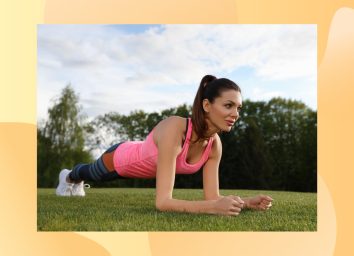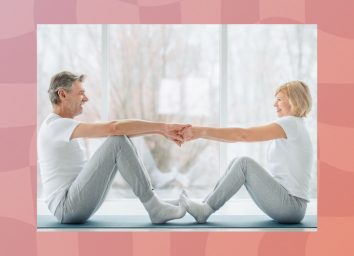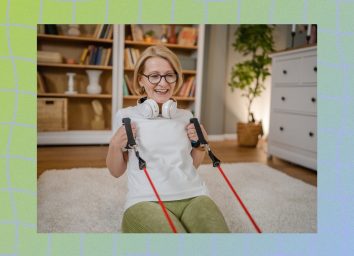The Top 5 Walking Habits That Slow Aging, Fitness Expert Reveals
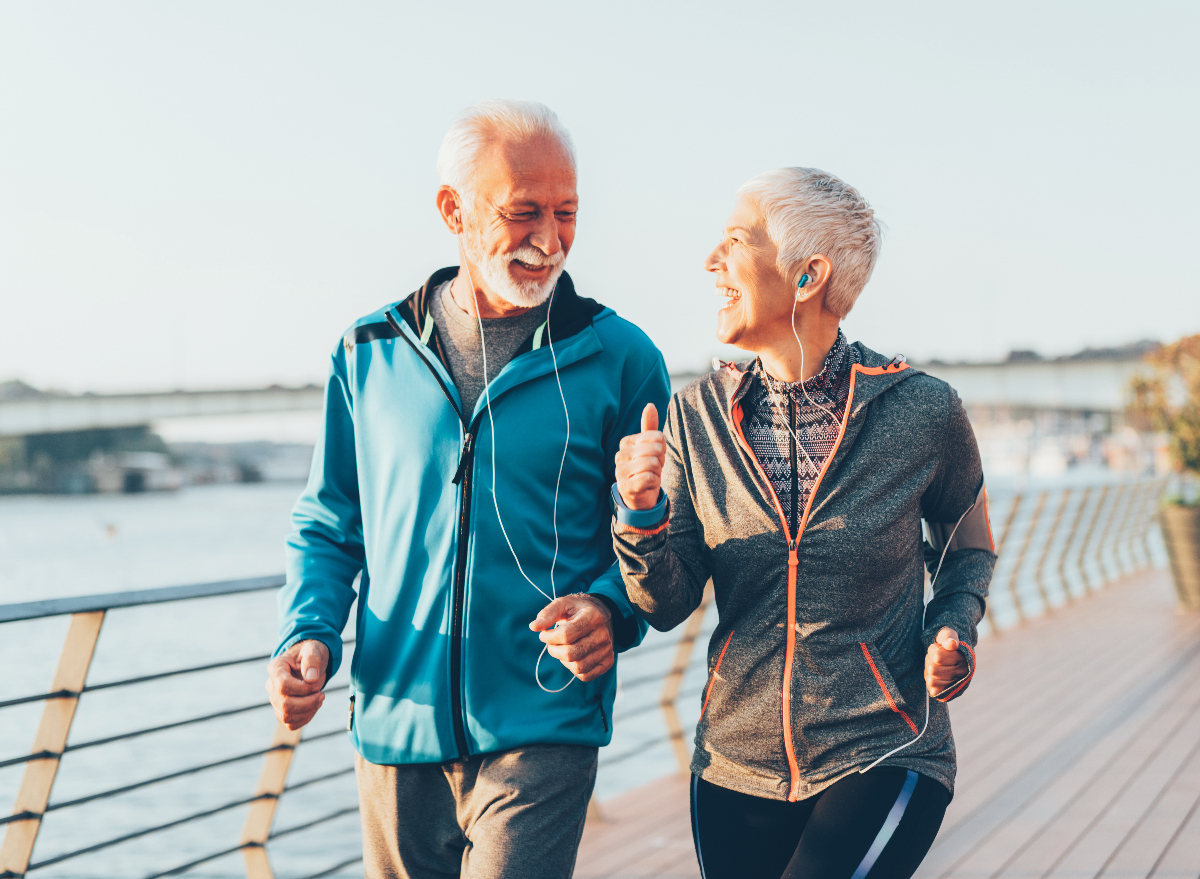
Don't underestimate the power of going on a brisk walk. Getting in this type of daily cardio and hitting your step goal can aid in shrinking body fat, enhancing your cardiovascular fitness, giving you an energy boost, improving your coordination and balance, lowering tension and stress, and making your immune system stronger, according to Mayo Clinic. Needless to say, if you want to stay fit and healthy as you grow older, you best lace up those sneakers and hit the trails to soak up these benefits! We've put together the top five walking habits that slow aging, which will further convince you to take a walk.
Keep reading to learn how you can improve your health by adding daily walks to your routine. Your mind and body will thank you.
Skip the elevators and escalators.
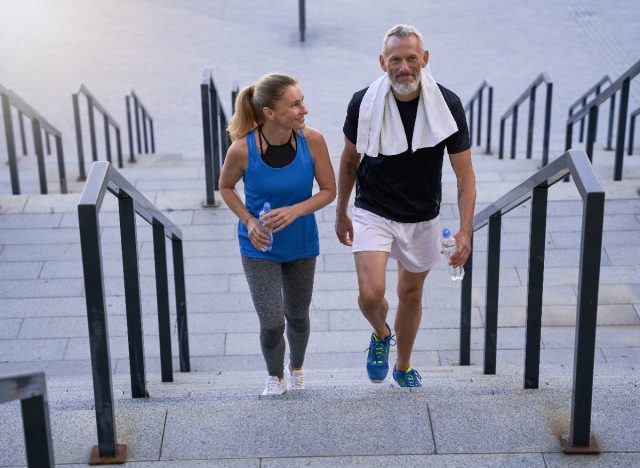
One way to increase your step count and calorie burn is to totally ditch elevators and escalators. Opt for the stairs instead so that your body can work harder to get to where you need to be.
Another pro tip is parking further away from your destination. Many of my clients who work office jobs and are more sedentary do this to increase their daily steps. Get used to this routine—it really helps!
Related: The #1 Floor Workout To Lose Stubborn Belly Fat Fast, Says Trainer
Take more than one walk each day.
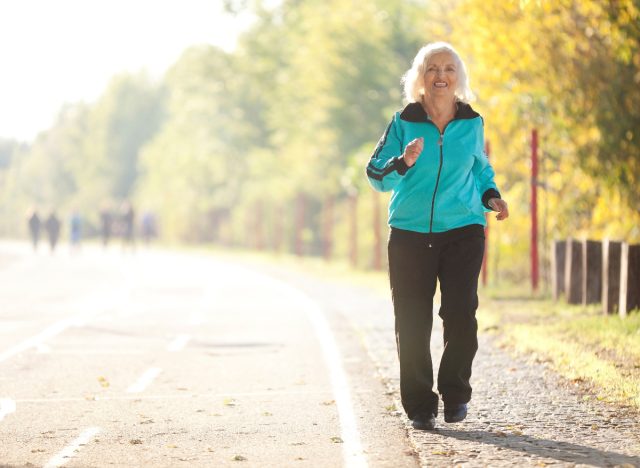
If your goal is to increase daily activity, you should incorporate at least two walks into your routine. Getting in at least 30 minutes is the bare minimum, so in order to optimize your health and slow down aging, you need to do more than that. An easy way to schedule in two walks is taking one during lunchtime/early afternoon and another post-dinner.
After all, research shows that taking a light walk after eating can decrease the body's insulin and blood sugar levels (via WebMD). The lead author of the study and Ph.D. student in physical education and sports sciences at the University of Limerick, Aidan Buffey, explains, "With standing and walking, there are contractions of your muscles. If you can do physical activity before the glucose peak, typically 60 to 90 minutes [after eating], that is when you're going to have the benefit of not having the glucose spike."
Related: The Camping Habits That Slow Aging Will Inspire You to Camp This Fall
Incorporate light hand weights into your walks.
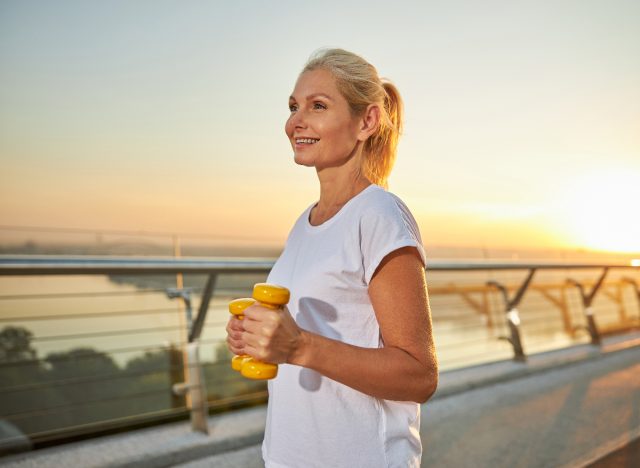
Want to make your walks a bit more challenging? If so, bring some light hand weights with you. The extra load you're carrying will allow you to work a bit harder during your walk, helping you burn more calories and incorporate your upper body during the workout.
As a caveat, you don't want to choose weights that are too heavy, since they can throw off your natural walking pattern. Start with 1 to 2 pounds.
Take your pup along for the cardio fun.
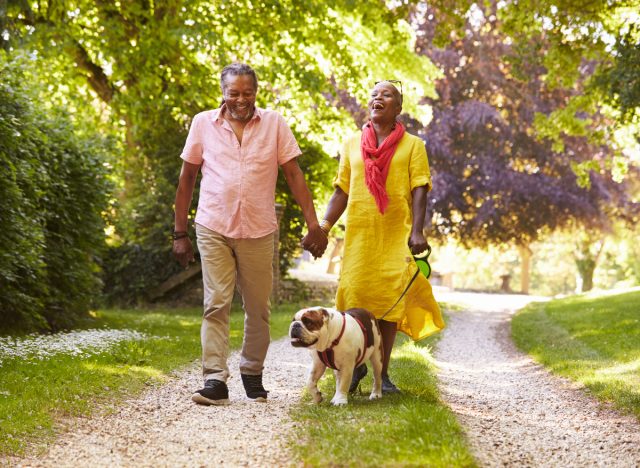
If you're a proud dog parent, a great walking habit to get into is bringing your pooch along with you to enjoy the cardio fun. Chances are, you'll walk even more than if you were by yourself, and you'll also help your dog get more active. What's better than that?
Alternate your speed.
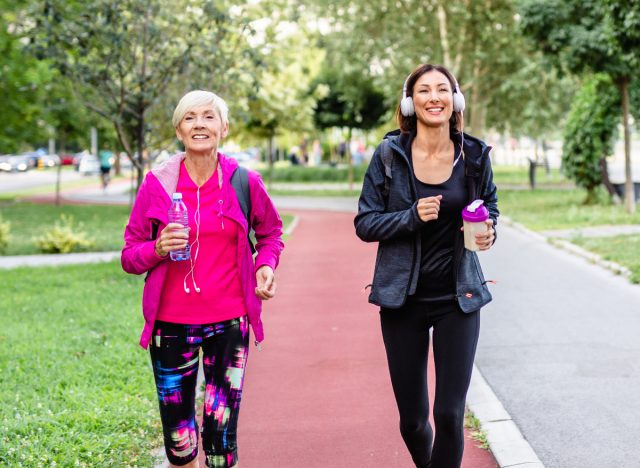
The last of the walking habits that slow aging has to do with alternating between a steady pace and more of a "power walking" speed. This will elevate your heart rate and increase your calorie burn. You can start with intervals of 20 to 45 seconds of power walking in between your regular walking pace.
